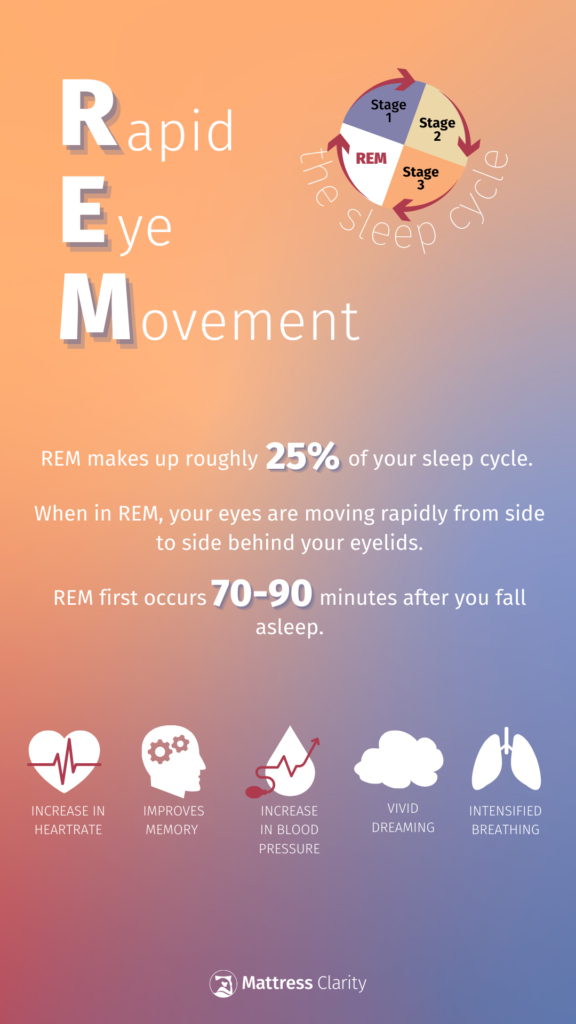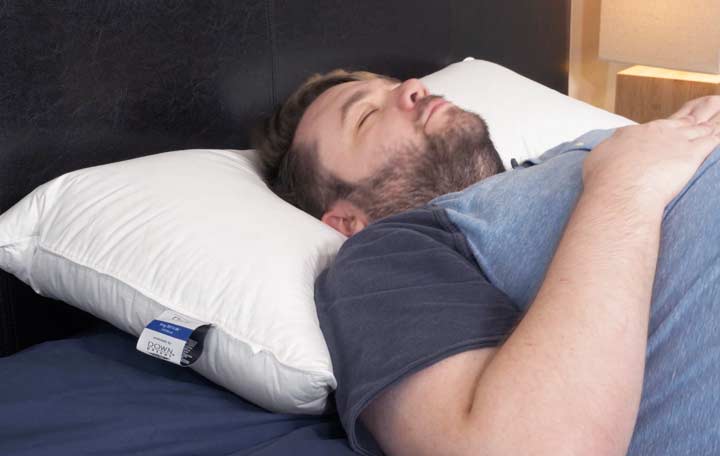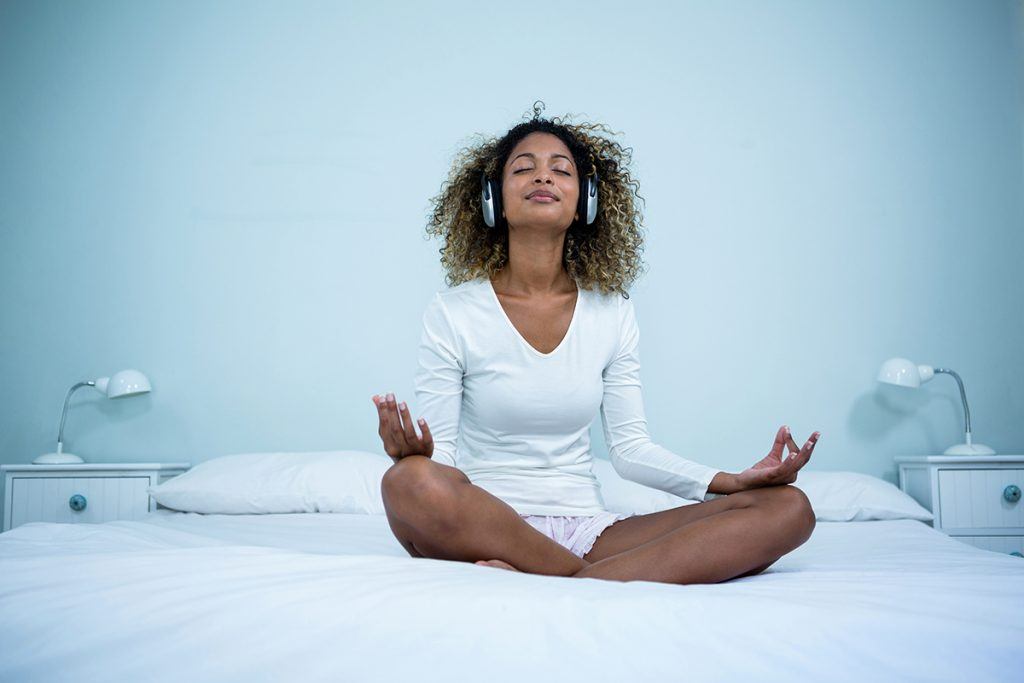Sleep can be a mystery, especially if you struggle to get more of it. You may consider sleep as one single stage where your body and mind rest and rejuvenate. But sleep is a more nuanced process that includes different stages, each with unique benefits for your well-being.
Understanding REM Sleep
When you’re sleeping, your brain activity can be organized into two predictable patterns. One of these patterns is known as rapid eye movement (REM) sleep. The other pattern is non-rapid eye movement (NREM) sleep.

You spend about 25% of your sleep time in REM sleep and the remaining 75% moving through the three phases of NREM sleep.
You cycle through these four sleep stages multiple times each night.
What Happens During REM Sleep?
REM sleep is the final stage of the sleep cycle. After you move through the three NREM sleep stages, you’ll find yourself in the dream-filled REM stage. It takes approximately 90 minutes after you fall asleep to enter the REM stage.
Dreaming
REM sleep is associated with dreaming. When researchers wake volunteer subjects during REM sleep, the sleepers can recall elaborate, vivid, emotional, and even hallucinogenic dreams. When sleepers are woken during NREM stages of sleep, they report fewer dreams or dreams that are less vivid and emotional.

During REM sleep, your arm and leg muscles experience a temporary paralysis, which can prevent you from physically acting out your dreams.
We still don’t know exactly why we dream.
However, some researchers believe that dreaming may be a process of “unlearning” that occurs in our minds during REM sleep—your brain could use dreaming to wipe out unwanted thoughts and erroneous information. Others hypothesize that dreaming does the opposite: reinforcing and rehearsing certain situations not currently encountered during your waking moments.
While there’s no general consensus about why we dream, scientists agree that the REM stage of sleep is the one with the most dream activity.
Brain Activity
As you cycle out of the deepest stage of NREM into REM sleep, your brain wave frequency starts to look more like it does when you’re awake.
During REM sleep, your brain is highly active. Your brain waves aren’t the only things picking up here; your breathing, heart rate, and blood pressure also return to near-wakeful levels during REM.
Eye Movements
In addition to increased brain activity, your eyes move rapidly back and forth beneath your eyelids during REM sleep. Hence, its (not overly creative) name.
The purpose of rapid eye movement during this sleep stage was unclear for a long time. Yet recently, researchers at UC San Francisco posed an answer. The study found that during REM sleep, our eyes are looking at our dreamscapes, and our eye movement is associated with what we’re looking at in our dream worlds.
Why Is REM Sleep Important?
Each stage of sleep offers its own benefits, including the dreamy REM stage.
Since newborns spend much of their time in a REM sleep state, researchers believe it aids brain development and motor learning. It’s also believed that REM sleep helps facilitate and consolidate certain types of memory by activating GABA neurons needed for memory retention.
REM is also believed to help facilitate learning and even heighten general creativity. One of the most intriguing benefits of REM sleep is the possibility that its function is to prime us for wakefulness. REM sleep periods are almost always followed by wakefulness, and the amount of time spent in REM sleep steadily increases throughout the night. When humans and animals are woken from REM sleep, they are more alert than if they are woken during NREM sleep.
The most important function of REM sleep may simply be to prepare us to open our eyes and turn off our alarm clocks in the morning.
How Much REM Sleep Do We Need?
Most adults require seven to nine hours of sleep a night, and 25% of that time is spent in REM sleep, although not all at once.
During your first sleep cycle, you’ll spend about 10 minutes in REM sleep. Each sleep cycle gets gradually longer as you move through the night. When you first fall asleep, your sleep cycle is dominated by NREM sleep.
As the evening progresses, your cycle shifts to become more dominated by REM sleep. You may spend up to an hour in the REM cycle during the final sleep cycle before waking.
You’re likely to clock around 90 minutes or more in the REM phase of sleep throughout the night.
What Happens if We Don’t Get Enough REM Sleep?
Since most of your REM sleep occurs in the later part of the sleep cycle, waking up extra early could mean you’re not getting enough REM sleep.
“If you cut your sleep hours short, most of what you’ve deprived yourself of is REM sleep,” according to Dr. Michael Grandner, director of the Sleep and Health Research Program and associate professor in the Department of Psychiatry at the University of Arizona College of Medicine.
Since REM sleep can play a role in learning, memory, and mental recovery, regularly depriving yourself of REM sleep could mean you’ll have trouble remembering new things.
The Sleep Cycle
While the sleep cycle sounds complicated, it’s actually pretty simple. You’re either moving deeper into sleep during one of three NREM stages, or moving out of sleep—and into dreams —during the REM stage.
Stage One: Light Sleep
During NREM stage one, you’re moving into light sleep. Your body may twitch and you are easily awakened.
Stage Two: Light Sleep
NREM stage two helps move you from light sleep into a deeper sleep. Your heartbeat and breathing slow and muscles relax as your brain activity slows.
Stage Three: Deep Sleep
NREM stage three is the period of deepest, most restful and restorative sleep. This stage is marked by the slowest breathing and brain activity and the most relaxed muscles. It is hardest to wake during this stage.
Stage Four: REM Sleep
REM sleep is the dream stage of sleep, and it’s the final stage of the sleep cycle. Your brain activity, breathing, and heartbeat all increase and it’s much easier to wake up.
Tips for Improving REM Sleep
How can you improve your sleep during REM and all the other phases of the sleep cycle?
Create a Sleep-Friendly Environment
Your environment plays a significant role in your ability to sleep comfortably. Your room temperature and bedding are key to helping you drift off and stay asleep through all of the cycles.
Sleep Hygiene Practices
Sleep hygiene refers to the healthy habits that help you sleep, such as eliminating screen time before bed, keeping a consistent schedule, and meditating. Creating sleep-friendly habits can help ensure you get plenty of sleep.
Stress Management and Relaxation Techniques
Anxiety and stress can be disastrous for sleep and difficult to keep at bay. When you start to feel overwhelmed, anxious, or stressed out, you can protect your sleep with relaxation techniques such as meditation and deep breathing exercises.

Avoid Alcohol Before Bed
While alcohol may help you fall asleep fast, it can actually impact sleep in a negative way. Alcohol can disrupt your sleep and cause you to wake up in the middle of the night, disturbing your natural sleep cycle. Avoid drinking alcohol before bed for a good night’s sleep.
FAQs
What is REM sleep and why is it important?
REM sleep is one of four sleep stages we cycle through each night. REM sleep is associated with dreaming and is thought to benefit learning and memory.
How long does a typical REM cycle last?
The first REM cycle lasts around 10 minutes and gets progressively longer as the sleep cycle continues throughout the night. Your final REM cycle could last up to an hour.
What causes a lack of REM sleep?
The biggest disruption to REM sleep comes from waking up too early in the morning. When you first fall asleep, you spend more time in non-REM stages. Throughout the evening, the cycle flips, spending more time in REM sleep before you wake up. Maintain consistent sleep and wake times to ensure you get enough REM and non-REM sleep every night.

